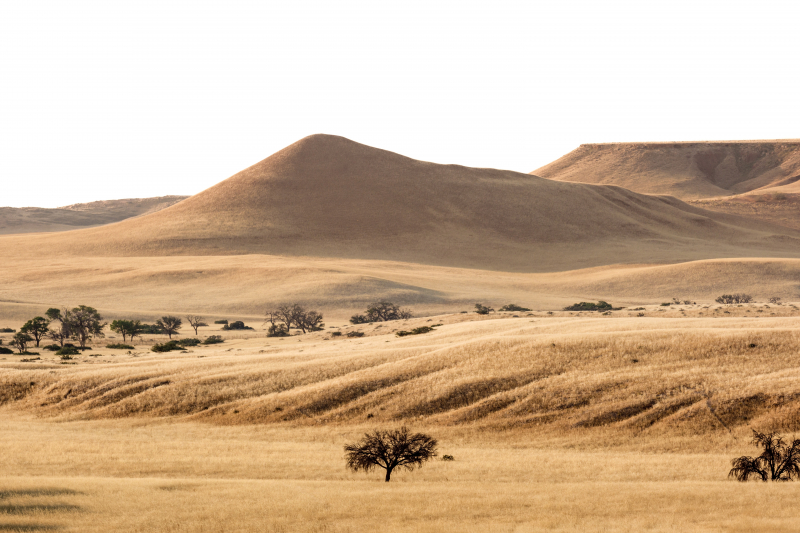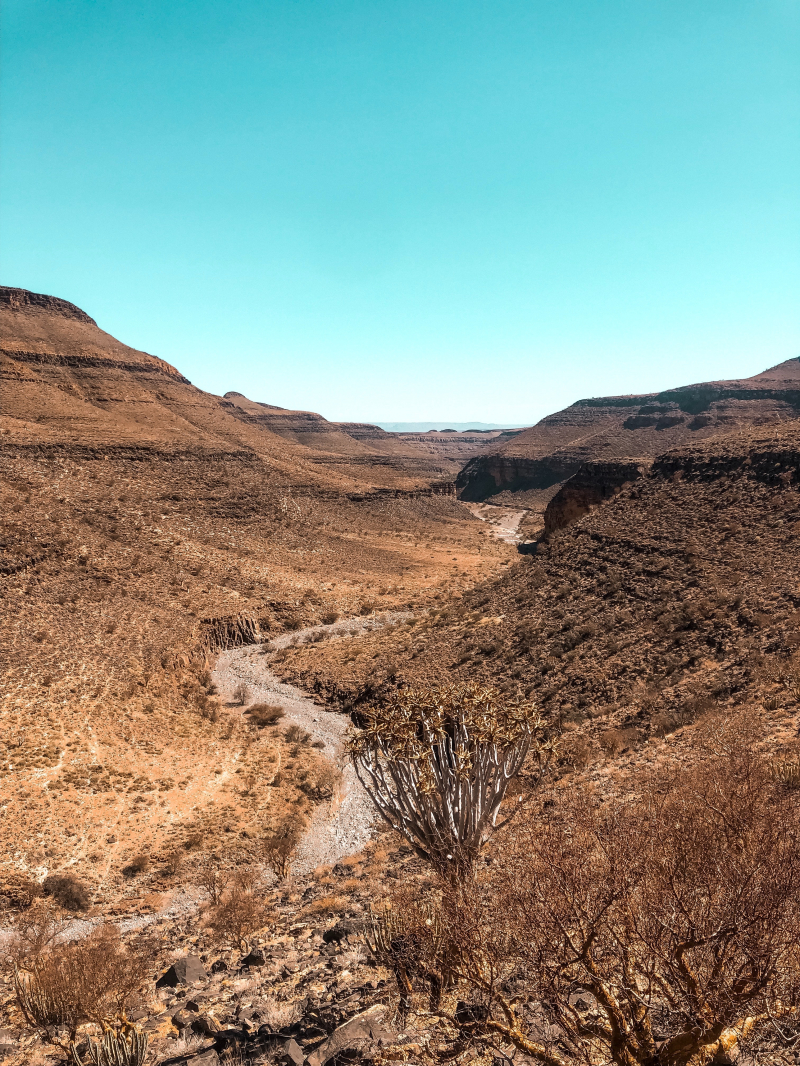Extreme Climate
The next reason that contributes to 97% of Namibia being empty, is the country's extreme climate. Namibia extends from 17°S to 25°S latitude, which is the range of the sub-Tropical High-Pressure Belt. The climate description of the sub-Tropical High-Pressure Belt is hot and arid, it gives Namibia a frequent clear sky, and provides the country with more than 300 days of sunshine per year. In the far south of Namibia, Warmbad for instance, the temperature maxima could be above 40 °C (104 °F). The overall temperature of Namibia is therefore also high. During summer months the average temperature can hike up to 36° C. This harsh temperature makes living very difficult in most parts of the country.
The winter in Namibia (June – August) is dry, and both rainy seasons of Namibia occur in the summer. The first one is a small rainy season between September and November. The second one is bigger and longer, between February and April. However, rainfall in Namibia is very erratic and sparse, and droughts are common. The country often goes through extended periods of drought in most areas. Despite being a country with a small amount of rain, Namibia still has a part of the Orange River running through it. This has caused annual seasonal flooding in the northern parts of the country called "Efundja". The worst floods so far occurred in March 2011 and displaced 21,000 people. This is one of the reasons that make the living conditions in the northern parts of Namibia hard to live in.







